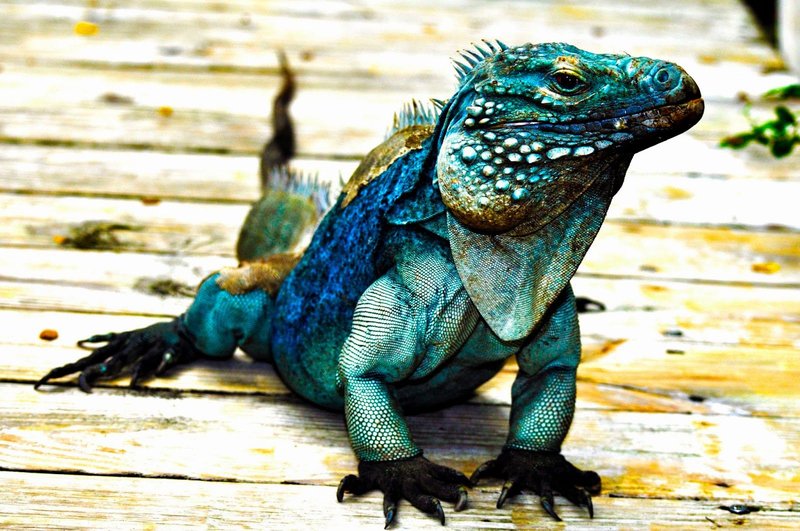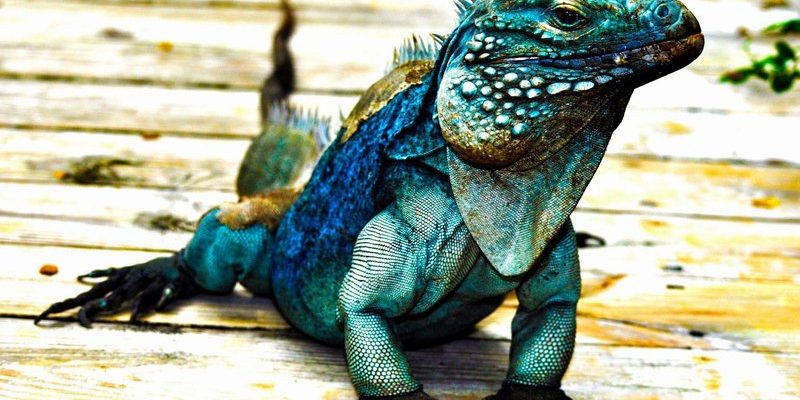
If you’re considering adding a blue iguana to your life, it’s vital to understand their needs and behaviors. Are they high-maintenance like a houseplant that requires constant watering, or are they more like an outdoor shrub that can withstand a little neglect? Let me explain what it takes to create the best environment for these fabulous creatures, whether you’re planning to keep one inside your home or let them enjoy the great outdoors.
Understanding The Blue Iguana’s Natural Habitat
Blue iguanas, or *Cyclura lewisi*, are originally from the Caribbean islands of the Cayman Islands. In the wild, they thrive in sunny, dry areas with plenty of vegetation. They love climbing trees and basking in the sun to regulate their body temperature. This natural habitat informs a lot about what you need to consider when thinking about where to keep them.
Outdoors, blue iguanas enjoy a spacious area where they can roam, climb, and explore. This outdoor setting mimics their natural environment, providing warmth, sunlight, and the opportunity to engage in natural behaviors, such as foraging for food. Meanwhile, indoors, they require a carefully crafted habitat to provide similar conditions, such as UV lighting, heat lamps, and plenty of climbing surfaces. So, if you’re planning to keep one as a pet, think carefully about your space and how it can cater to their needs.
Can Blue Iguanas Live Indoors?
Yes, blue iguanas can live indoors, but it takes some effort to create a suitable space for them. When keeping a blue iguana inside, it’s essential to replicate their natural environment as closely as possible. Let’s break down what you’ll need to consider for their indoor habitat.
First, you’ll need adequate space. A typical blue iguana can reach lengths of up to six feet, so a large enclosure is a must. A good rule of thumb is to have an enclosure that is at least 6 feet long, 3 feet wide, and 4 feet tall. This setup allows them to move around comfortably and exercise on branches and platforms.
Second, think about lighting and temperature. Blue iguanas require both UVB lighting and a heat source to help them digest food properly. You’ll want temperatures in the basking area to be around 95°F, while the cooler side of the enclosure should be around 75°F. Always keep a thermometer handy to monitor these temperatures effectively.
Pros and Cons of Keeping Blue Iguanas Indoors
Keeping a blue iguana indoors certainly has its perks, but it’s not without its challenges. Here are some pros and cons to consider:
Pros:
- Controlled Environment: You can manage the temperature, humidity, and lighting effectively.
- Protection from Predators: Indoors, your pet is safe from potential threats like birds of prey or stray animals.
- Easier Monitoring: You can observe your iguana’s health and behavior more easily in a contained space.
Cons:
- Limited Space to Roam: Your iguana may feel cramped if the enclosure is too small.
- Artificial Environment: You have to put extra effort into recreating their natural habitat.
- High Maintenance: Regular cleaning and monitoring of the enclosure are required to maintain a healthy living environment.
Can Blue Iguanas Live Outdoors?
Now, let’s talk about the outdoors! Blue iguanas can live outside if you provide an adequate outdoor habitat. However, this option comes with its unique set of requirements.
For outdoor living, you need a secure enclosure that offers both shade and sunlight. It should be large enough for them to explore and bask. A good outdoor setup might include a combination of grassy areas, rocks for climbing, and shaded spots to escape the heat. A sturdy fence is essential, as blue iguanas are known for their impressive climbing skills and might try to escape.
You might be wondering about seasonal changes. Blue iguanas are quite resilient, but drastic temperature changes can be harmful. During extremely hot or cold weather, you may need to bring them indoors to ensure their well-being. Always monitor the weather and be prepared to make adjustments as necessary.
Pros and Cons of Keeping Blue Iguanas Outdoors
Like indoor living, an outdoor setup has its advantages and disadvantages. Here’s what to keep in mind:
Pros:
- Natural Behavior: Outdoors, iguanas can exhibit natural behaviors like burrowing, climbing, and basking.
- Space to Roam: A larger outdoor area provides plenty of room for exercise.
- Better Mental Stimulation: With a more natural environment, your blue iguana might be happier and more engaged.
Cons:
- Weather Dependency: You’ll have to keep a close eye on weather conditions and be prepared for changes.
- Predator Risks: Outdoor habitats come with risks from predators that could harm your iguana.
- Maintenance: You’ll still need to clean their living space and ensure a safe environment.
So, can a blue iguana live indoors or outdoors? The answer is yes to both, but it’s crucial to create an environment that meets their needs, whether inside or outside. An indoor habitat allows for better control over their environment but requires dedicated space and regular maintenance. On the flip side, outdoor living can provide a more enriching experience, but it comes with challenges like unpredictable weather and potential predators.
Ultimately, the choice comes down to your living situation and your ability to meet a blue iguana’s needs. Every iguana is unique, and their happiness depends on how well you can mimic their natural habitat. Whether you choose to keep your blue iguana indoors or outdoors, with careful planning and consideration, you can provide a loving home where they can thrive.

